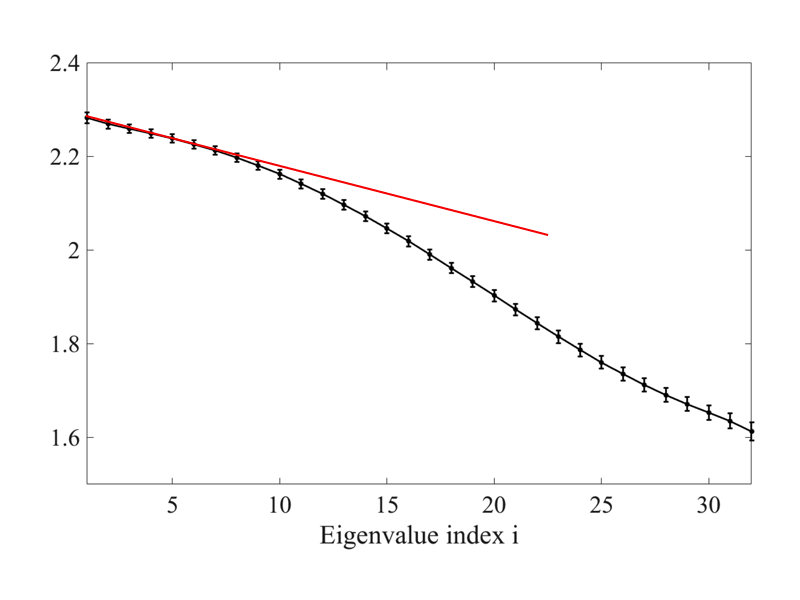![]() Random matrix theory: similarities and distinctions
Random matrix theory: similarities and distinctions
For an NxN random matrix, the top eigenvalues behave as
![]()
![]()
The scaling with N suggests a correspondence:
If such correspondence holds, for the free energy of m non-intersecting paths, we would get
To reproduce the m^2 for free energy, we would need for eigenvalues of
to behave as
.jpeg)
Similar scaling with N=>t as expected for DPRM, but different scaling with eigenvalue index.

Sherry Chu, MIT thesis (2019) (offline) chapter
![]() Density of states: The scaling with eigenvalue index is a reflection of the scaling of density of states at the edge:
Density of states: The scaling with eigenvalue index is a reflection of the scaling of density of states at the edge:


(Sidenote: while the product of tridiagonal random matrices is not symmetric, all eigenvalues remain real and positive!)
![]() Evolution of Log(eigenvalues) in "time":
Evolution of Log(eigenvalues) in "time":


![]() Open questions:
Open questions:
Transition between
and
.
Transition between edge and middle Log(eigenvalues).
"Particle-hole" symmetry between smallest and largest Log(eigenvalues).
Is the arrangemet of Log(eigenvalues) hyperuniform?